Last week, Jaz and Anike had a great podcast featuring the Leviathan of Hebrew mythology. At one point they fell into a nifty rabbit hole comparing the slaying of the Leviathan to the slaying of Tiamat, Vrtra, and Jormungandr. I’m here to poke a little at that hole and see what comes out. Cuddly rabbit or fierce dragon? Only one way to find out, Mythsters.
Dragons In the Chaos of Creation
When we look at creation, we often think of something good. Something positive. But it is also something chaotic. Creation is a state of change. It is a moment of shifting one thing to something else. It is when stability is shaken up, deconstructed, and rebuilt as something new.
In many myths, dragons play an integral role in creation. Sometimes, like with the Rainbow Serpent, they are the creator. Other times, such as with Vrtra, they are the tool of the creator. I want to take a look at some of the different roles dragons have played in creation.
Hatuibwari
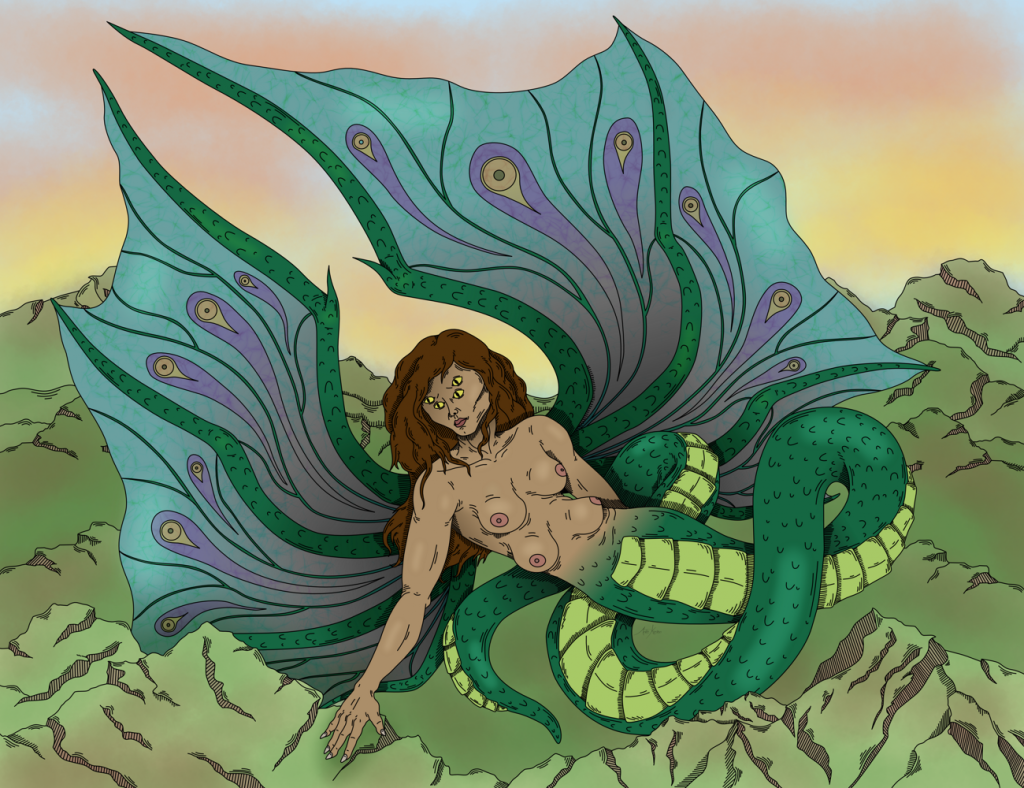
Okay, backing up all the way to episode one of the Mythsterhood of the Travelling Tales, you might remember the episode art of Hatuibwari. She was a dragon who created humans and nurtured humans and animals with her four breasts. When it comes to creation, her style of creation seemed rather peaceful. Her downfall? Cuddling her human grandson. Her son-in-law came in, saw her, thought she was a common serpent strangling his son, and chopped her to bits. That’s actually when things got chaotic, when man turned against the creator.
Rainbow Serpent
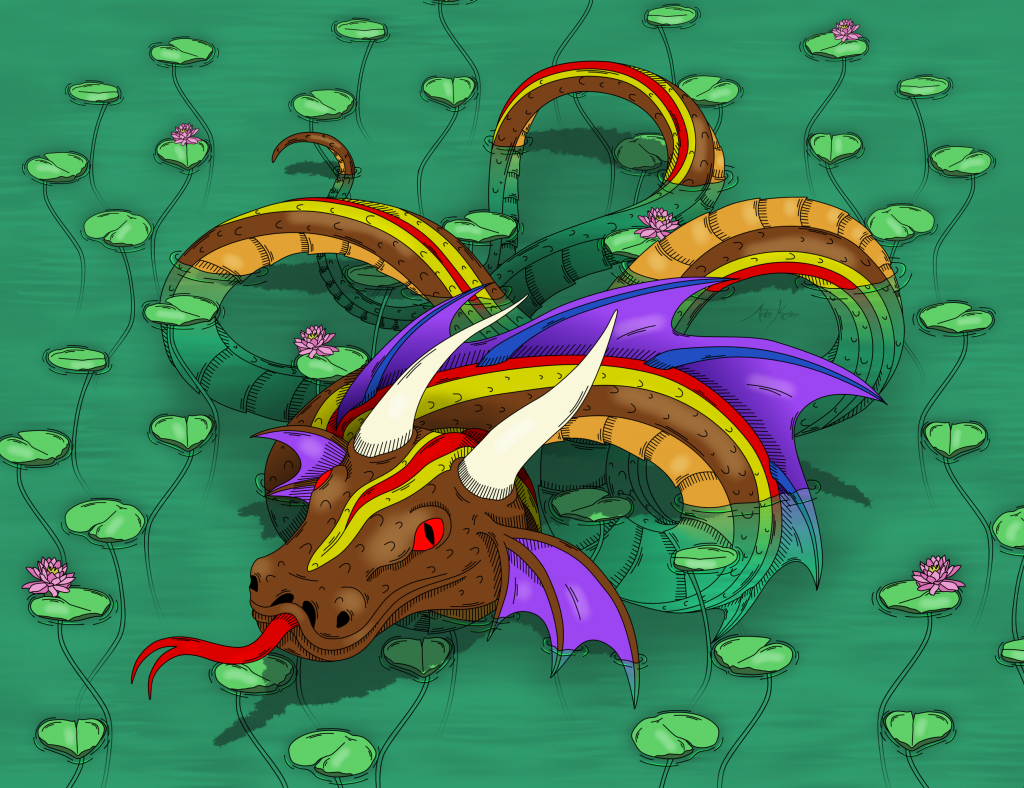
In episode two, we touched on the Rainbow Serpent of Aboriginal mythology, and I shared The Rainbow Serpent by Dick Roughsey. In this book, people existed without anything else. The Rainbow Serpent comes along and creates the mountains, valleys, gorges, rivers, ponds etc. Basically, the serpent’s body tears up the flat land, giving it shape.
Similar to Hatuibwari, the Rainbow Serpent was mostly peaceful, except for his penchant for eating humans. I mean, a creature’s got to eat, right? Anyway, he eats two brothers and the humans split him open to rescue the brothers. The serpent gets angry and throws the mountain all around him — people run away, turning into animals. In this story, there is moderate creation before the slaying of the dragon, and it is humanity slaying the serpent that kicks things into overdrive.
Vrtra
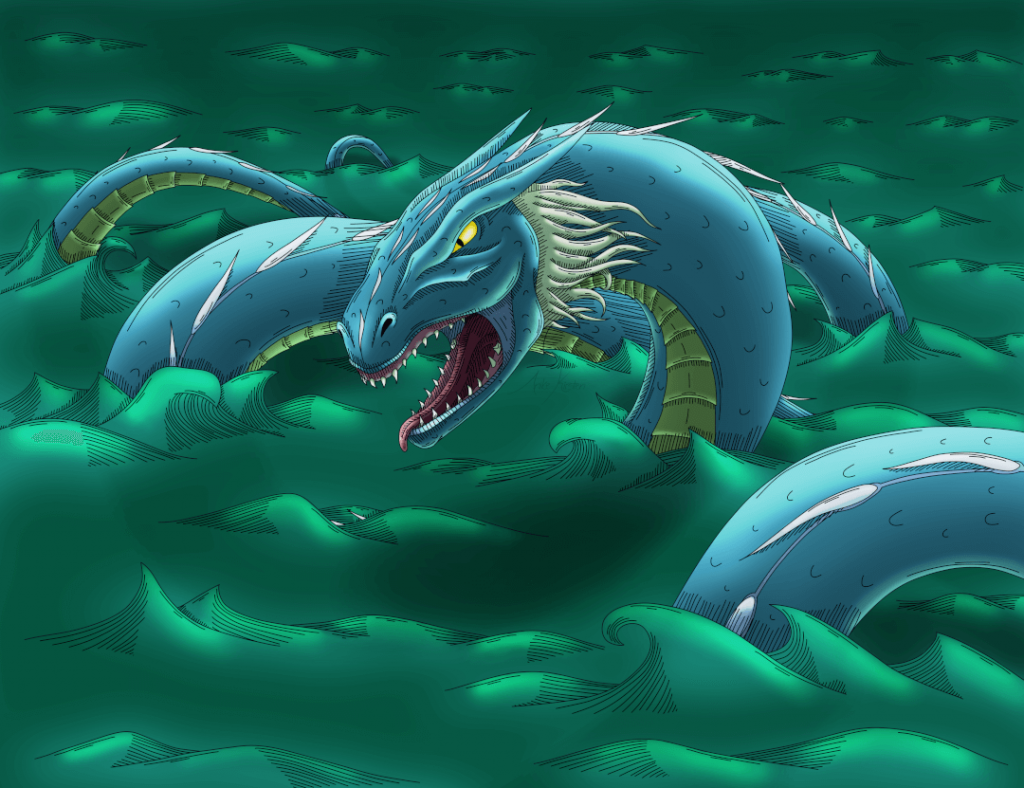
Vrtra wasn’t exactly a creature of creation. That would be Shesha or Vasuki, much more benevolent serpents of Indian mythology. But, Vrtra was one of the danavas, the evil gods that sort of balanced out the good Asuras.
Vrtra threatened the world by drinking up all the water and holding it in himself. This caused a drought. He was eventually vanquished by Indra, the god of thunder, who struck him with a lightning bolt and released the water. While Vrtra’s story isn’t one of creation, it is one of chaos and the chaos caused by nature.
Tiamat
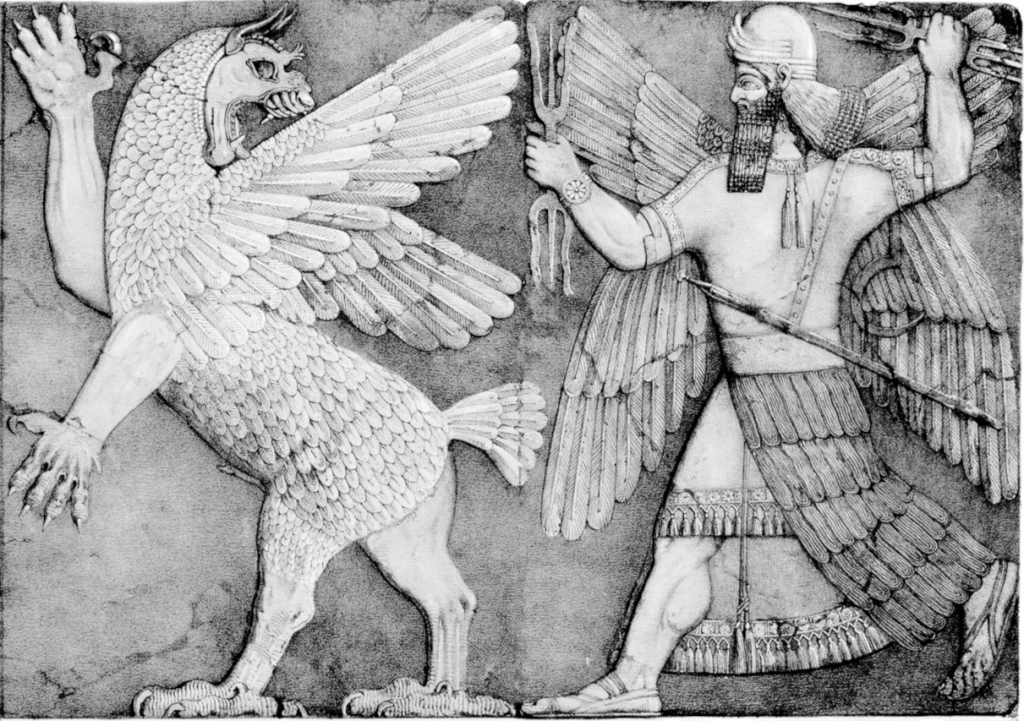
Tiamat, on the other hand, is definitely a creation story. She is the primordial goddess of salt water. Some stories have her joining salt and sea water to create the cosmos peacefully, somewhat similar to Shesha’s bed in the cosmic sea. Other stories have her as a fierce dragon that creates through chaos.
In these stories, she is killed by Marduk, who splits her body in half. He lets one half fall, creating the earth, and the flings the other half up, creating the heavens.
Leviathan
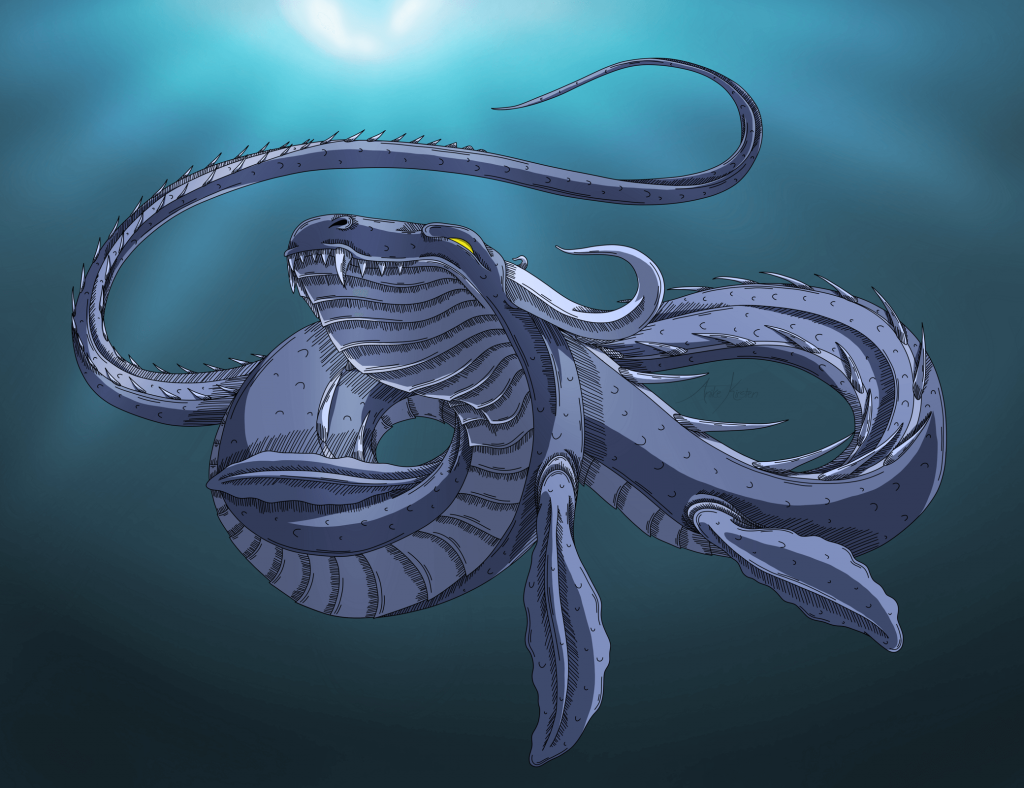
Was the Leviathan a creator or a creature of the creator? Thoughts vary based on canonized Hebrew texts and other found texts that are not part of the cannon. One thought is that the Leviathan was a primordial creature that god slew to create heaven and earth from the chaos of the cosmic sea. This is similar to Tiamat’s tale. Basically, there were a lot of old, creative powers of Chaos that the Hebrew god defeated during his creation. So was his creation out of nothing or more of a taming the chaos of something into the world we recognize today? If we look at the Leviathan as an extension of the Canaanite myth of Lotan, it’s easy to see the Leviathan is a taming myth.
Jormungandr
I’ll admit, Jaz and Anike know a lot more about Jormungandr and Thor than I do. One of them will be spearheading our Norse episode, for sure. But basically Jormungandr is a giant sea serpent who circles the entire world, biting his own tail. This positioning allows him to hold the world together. But he is destined to break free, which will eventually send the world into chaos. In essence, Jormungandr is chaos, which is currently restrained by his position.
In the end, Jormungandr triggers Ragnarok by releasing his tail. He and Thor then battle, both being fatally wounded. In this, Jormungandr is seen as the changing force — the being that forces new beginnings through endings. Slaying puts the creation process to rest.
Slaying the Dragon to Bring Order
As you can see in the above stories, each of the dragons had some role in creation, creativity, or global change. In most of the stories, gods, demi-gods, or even humans slay the dragon to end this tumultuous period, bringing about a time of order.
I believe the further west you go, the more chaotic and evil the dragon’s creation cycle becomes. In the Hatuibwari example, the dragon was benevolent until challenged by humans. This, to me, represents humans attempting to fight nature and learning they should not, it is a cautionary tale to respect nature. Similarly, with the Rainbow Serpent, the creation was mostly peaceful until humans challenged the creator. It was then that the creation process grew violent. Although the Rainbow Serpent serves to caution people to respect nature, it also acknowledges the natural dark forces within nature.
As we go west, we get Vrtra, who was evil and chaotic for the sake of chaos, and slain by the god of thunder to give the natural lifecycle back to earth. Day and night, dry and rain, should not be chaotic but cyclical. However, we know that sometimes the order of nature is broken. There ARE droughts, there are eclipses. This story explains humanities will to defeat those chaotic parts of nature.
Next we get Tiamat and the Leviathan, which I believe to be very similar. Cosmic creators that are slain by gods in order to create the order of the earth.
Finally, we have Jormungandr, whose chaos is tamed by Thor, ushering in the next era.
Jaz had a theory that the cultures that have creation dragons that were not slain, tend to be those cultures who live in harmony with nature, who do not see nature as something chaotic that needs to be tamed. In essence, those who do not see nature as evil. Going into the stories, I can definitely see this connection.
As I mentioned before, the further west we go, the more often dragons personify evil. But what is evil if not chaos? And what is chaos if not a type of creation?
Leaving you with those deep thoughts! Until next time, Mythsters.

Be First to Comment